I recently traveled to Costa Rica, and I was immediately struck by the amount of birds fluttering around in the treetops from dawn until dusk. We took many jungle hikes and enjoyed private gardens, all of which offered various habitats for the birds. I was struck by the natural look of these habitats as opposed to an overly formal and contrived setup. The focus was truly on and for the birds, and design met function in a perfect dance.
When creating a natural habitat, Costa Ricans focus on four specific needs; nesting, water, perches and florals. Food, in the form of fresh fruit, is abundant in the jungle year-round, so there is
not an abundance of bird feeders. Instead, attempts are made to offer safe spaces where birds can nest, perch and bathe. I also ran into an abundance of rescue bird operations and found them charming and fascinating. Here are a few pointers I learned from observing the gardens of the jungle and the birds that reside there.
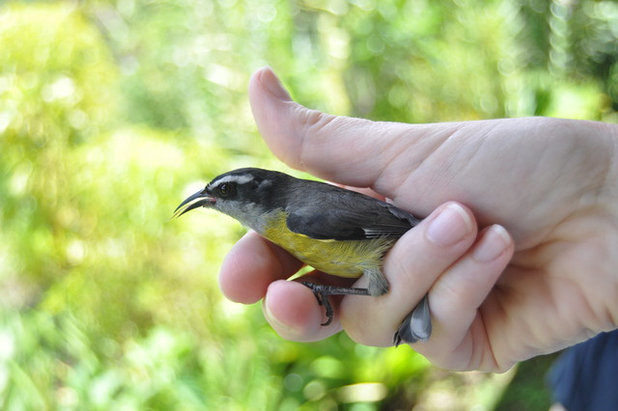
Amy Renea
Provide Homes for Mama and Baby BirdsWhen raising their young, most birds are fiercely protective. This little one flew right into the house one day and we released it to its mama, who was screaming for it right outside.
Many local businesses in Costa Rica rescue birds from the wild and cage them for protection. The ecorestaurant on Lake Arenal as well as Toad Hall nearby both had rescued toucans and parrots. If
you choose to permanently rescue an injured bird, be aware you must register it and that the best place for these birds is the wild if they can remain there.
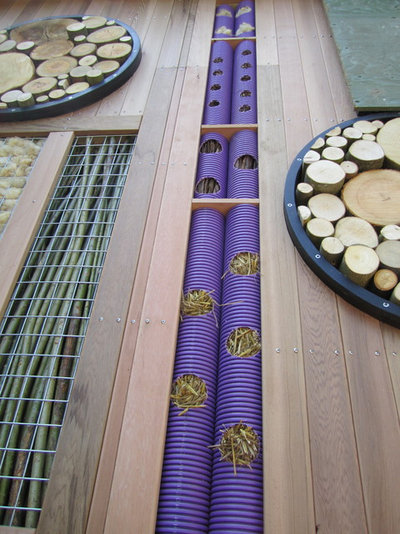
Urban Hedgerow
Providing nesting materials will ensure new little ones born in your garden each year. Try a cool setup like this or simply throw the hair from your hairbrush and small bits of moss and hay out in the garden. The birds will find them.
See how to create bird and bug habitats even in the city
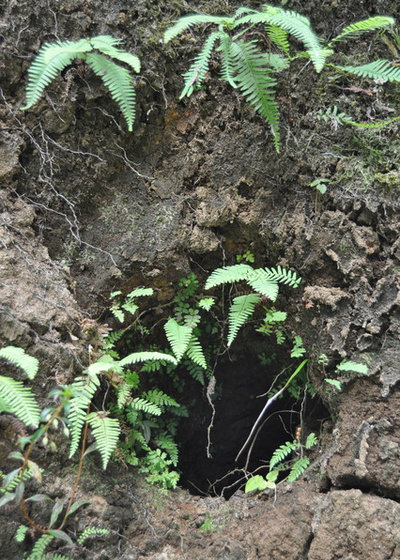
Amy Renea
While hiking in the jungles, we saw a lot of giant holes like these on straight-cut mud walls. For a long time, we were scared to death of them, imagining giant snakes emerging. We learned that a large amount of these holes are actually nesting holes for birds. Can you provide this kind of mud-wall environment in your garden? You might be surprised at the variety of birds that show up.
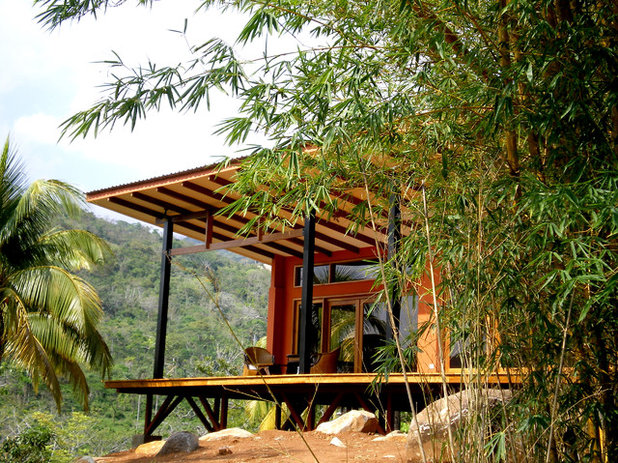
Fivedot
You might also consider designing an open, protected space when building your new home. Birds and other critters love the peace and protection of the space under a porch, and you’d have a constant show of wildlife with a setup such as this.
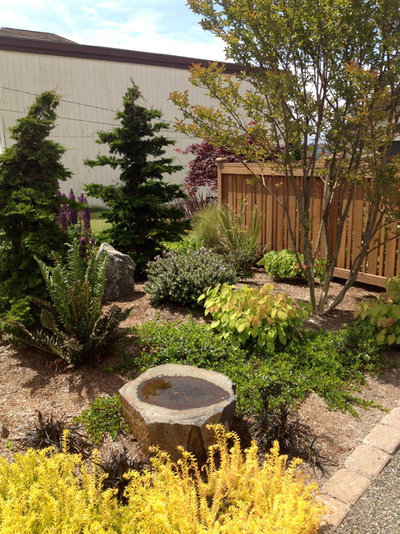
Greener Living Solutions, Inc
Create Watering HolesNatural cavities and dips in rocks are often found in the jungle. They collect rainwater, making the perfect bathing hole for the birds.
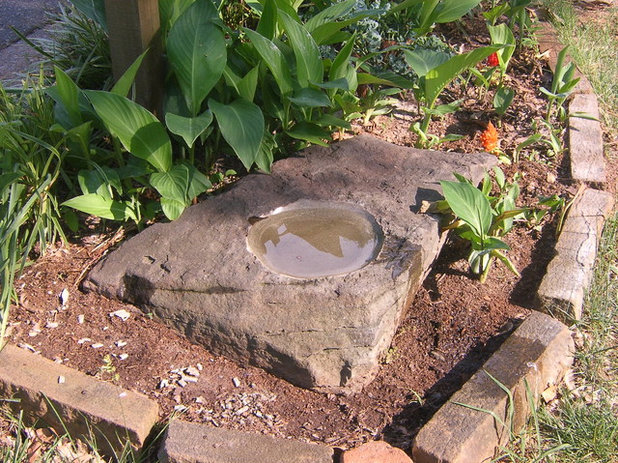
Consider creating a similar cavity in cement for your garden. The birds are sure to gather at a watering hole like this.
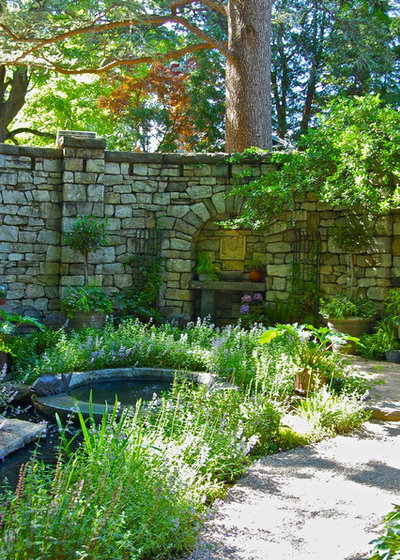
Liquidscapes
Some birds like to land in the middle of a wide-open space to avoid predators hiding in the brush, while others like a little cover to avoid predators in the air. Consider a low planting around a natural-looking watering spot for the latter. My chickens would adore a space like this.
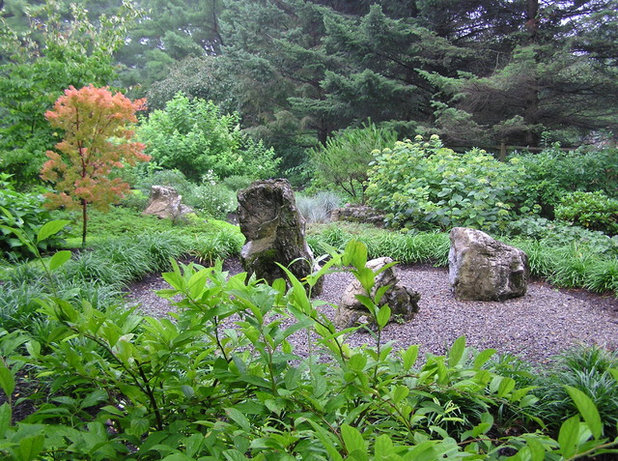
Garden Design, Inc.
Offer Sweet PerchesTo appease birds that need open space, consider an artistic arrangement of rocks where they can perch.
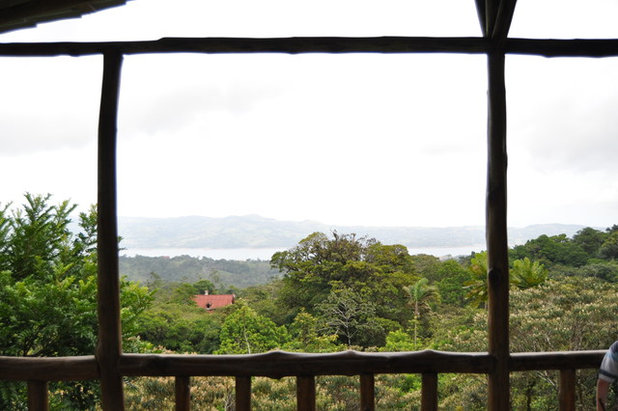
Amy Renea
Costa Rican architects are masterful at providing alluring perches for birds. Protected yet open railings and roofing trusses abundant in the indoor-outdoor living spaces are perfect for the birds.
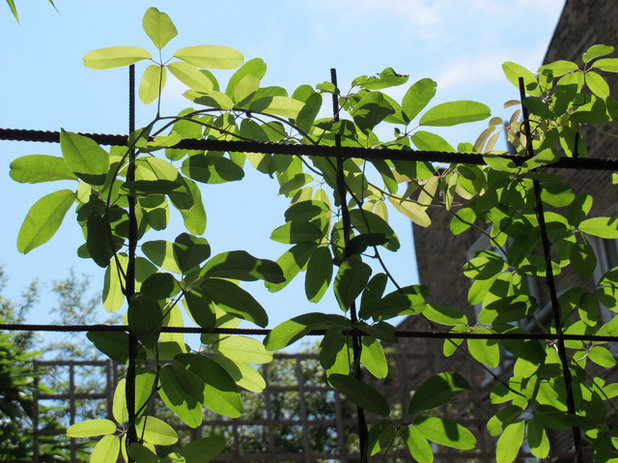
Fenton Roberts Garden Design
Similarly, you can provide this type of environment in your garden on a smaller scale. Weaving plants amid perching spots will ensure that many birds come to play.
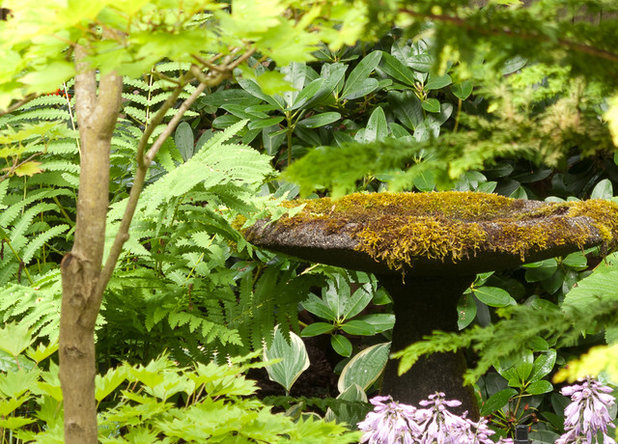
Le jardinet
In the jungle, greenery is abundant and almost overwhelming at times. The birds love it. A little moss creeping over your birdbath is beautiful and inviting to birds seeking a soft place where they can wet their feet and their beaks.
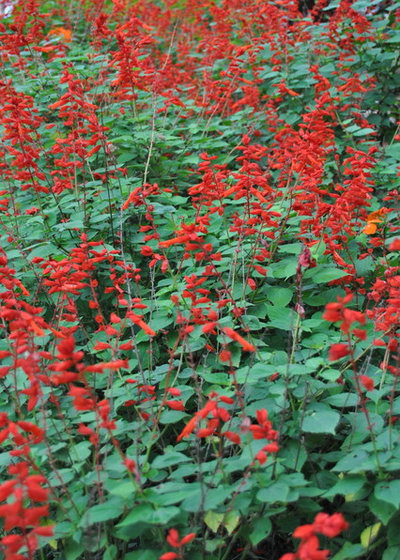
Amy Renea
Provide a Rainbow of BloomsColor matters. Hummingbirds are drawn to red, and a mass planting of red flowers will pop out from a blanket of jungle green.
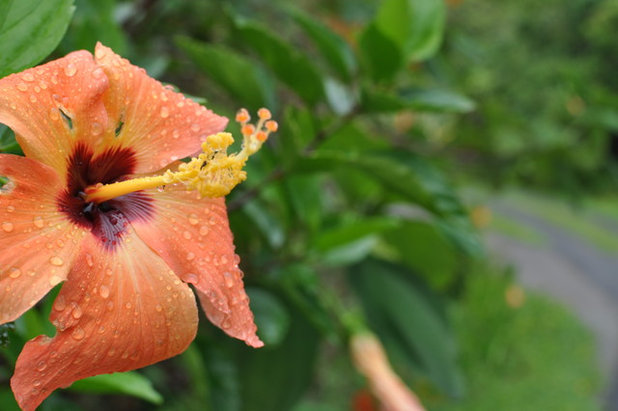
Amy Renea
Shape matters. Those hummingbirds like tall, spiky plants, like salvia, as well as plants with long, tubed stamens and pistils. Hibiscus (shown here in the wild) is a favorite.
See more plants and flowers hummingbirds love
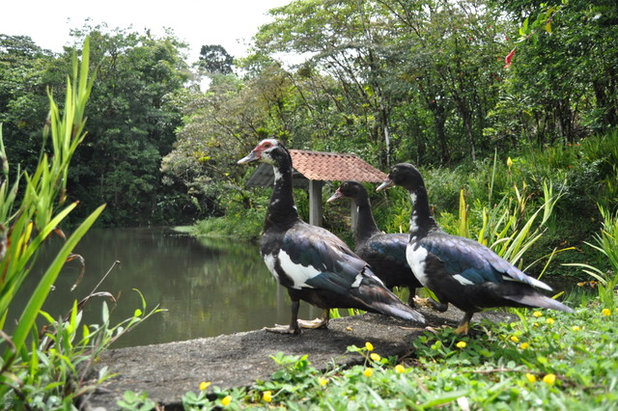
Amy Renea
So whether you plant a few new tropical plants this summer, add a perch or two or simply add a sunken rock for some natural water collection. The birds will thank you.
Shown: Costa Rican ducks
See more about gardening and landscaping with wildlife in mind





